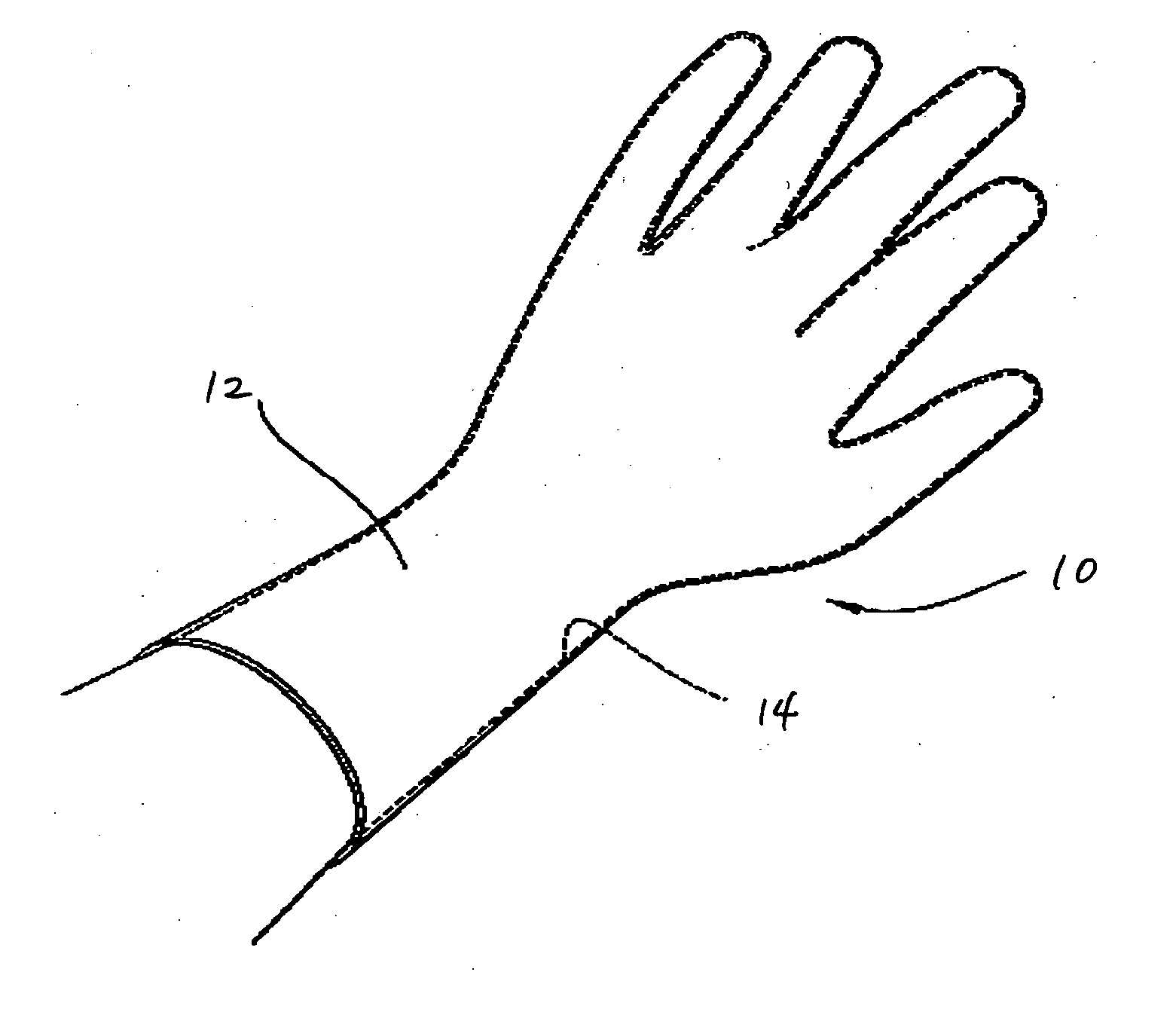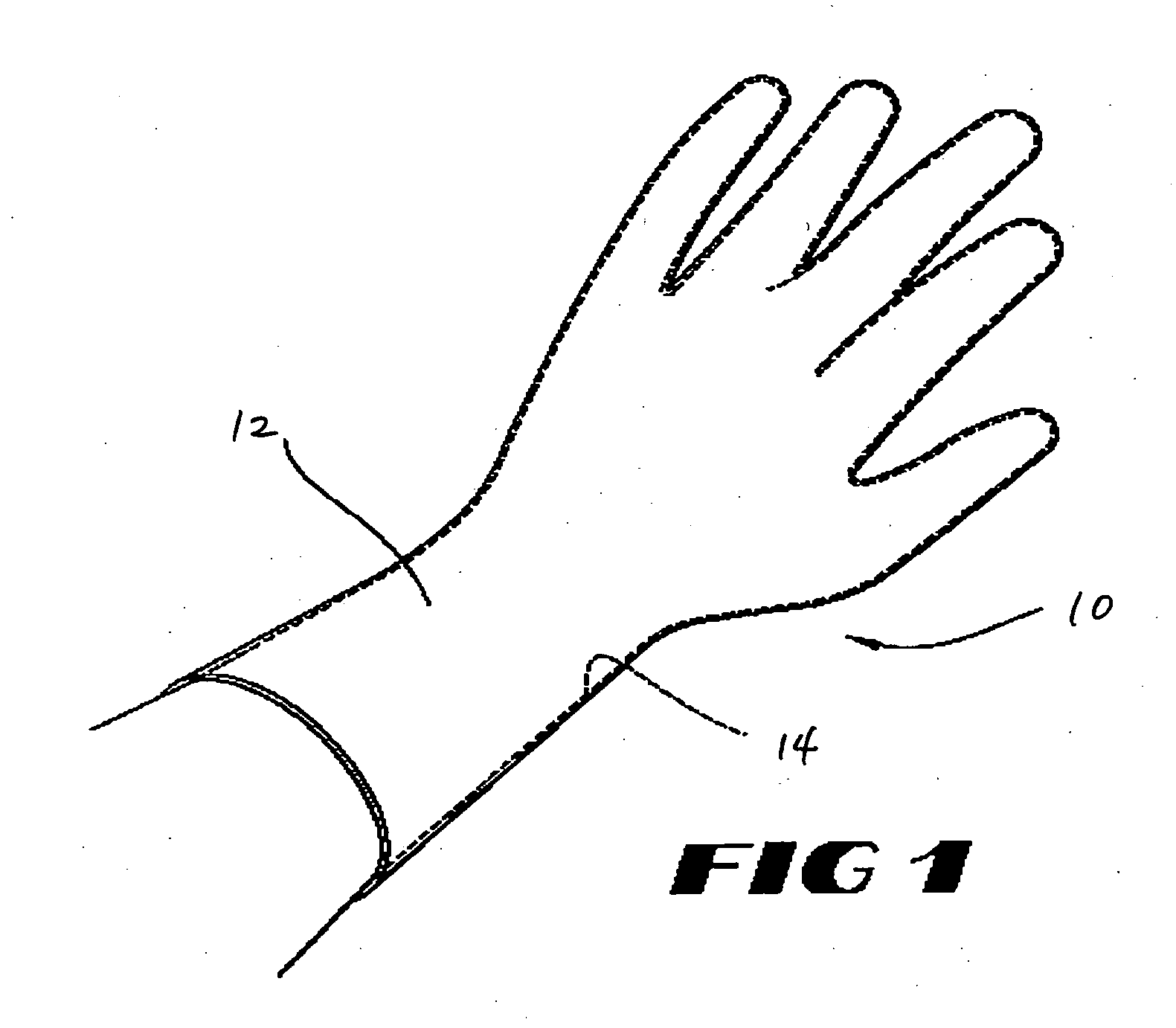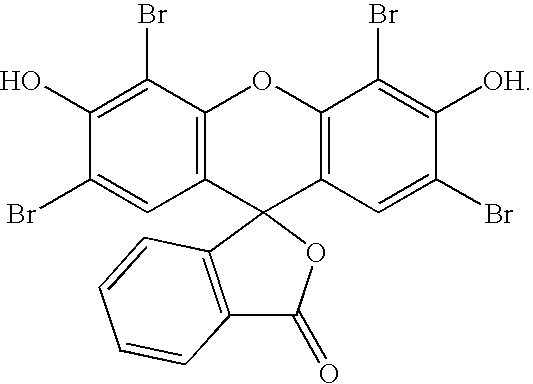Application of an antimicrobial agent on an elastomeric article
a technology of elastomeric articles and antimicrobial agents, applied in the field of elastomeric articles, can solve the problems of complex control of microorganisms, lack of protective effect, and inability to prolong the effect of antimicrobial
- Summary
- Abstract
- Description
- Claims
- Application Information
AI Technical Summary
Benefits of technology
Problems solved by technology
Method used
Image
Examples
Embodiment Construction
Section 1—Definitions
[0013] In this specification and the appended claims, the singular forms “a,”“an,” and “the” include plural reference unless the context clearly dictates otherwise. Unless defined otherwise, all technical and scientific terms used herein have the same meaning as commonly understood or generally accepted by one of ordinary skill in the art to which this invention pertains.
[0014] As used herein, “antimicrobial” refers to the property of a compound, product, composition or article that enables it to prevent or reduce the growth, spread, propagation, or other life activities of a microbe or microbial culture.
[0015] As used herein, “antimicrobial polymer layer” refers to a coating, film or treatment formed using an antimicrobial composition or agent, as defined and described herein.
[0016] As used herein, “elastic” or elastomeric refers to the property of a material to be both stretchable by at least 10% (i.e., the material can expand to at least 110% original dim...
PUM
| Property | Measurement | Unit |
|---|---|---|
| Temperature | aaaaa | aaaaa |
| Temperature | aaaaa | aaaaa |
| Temperature | aaaaa | aaaaa |
Abstract
Description
Claims
Application Information
 Login to View More
Login to View More - R&D
- Intellectual Property
- Life Sciences
- Materials
- Tech Scout
- Unparalleled Data Quality
- Higher Quality Content
- 60% Fewer Hallucinations
Browse by: Latest US Patents, China's latest patents, Technical Efficacy Thesaurus, Application Domain, Technology Topic, Popular Technical Reports.
© 2025 PatSnap. All rights reserved.Legal|Privacy policy|Modern Slavery Act Transparency Statement|Sitemap|About US| Contact US: help@patsnap.com



